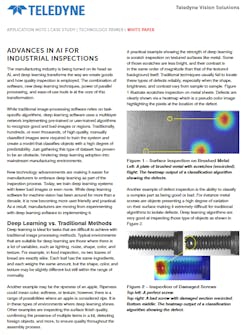Advances in AI for Industrial Inspections
The manufacturing industry is being turned on its head as AI, and deep learning transforms the way we create goods and how quality inspection is employed. The combination of software, new deep learning techniques, power of parallel processing, and ease-of-use tools is at the core of this transformation.
While traditional image-processing software relies on task specific algorithms, deep learning software uses a multilayer network implementing pre-trained or user-trained algorithms to recognize good and bad images or regions. Traditionally, hundreds, or even thousands, of high-quality, manually classified images were required to train the system and create a model that classifies objects with a high degree of predictability. Just gathering this type of dataset has proven to be an obstacle, hindering deep learning adoption into mainstream manufacturing environments.
